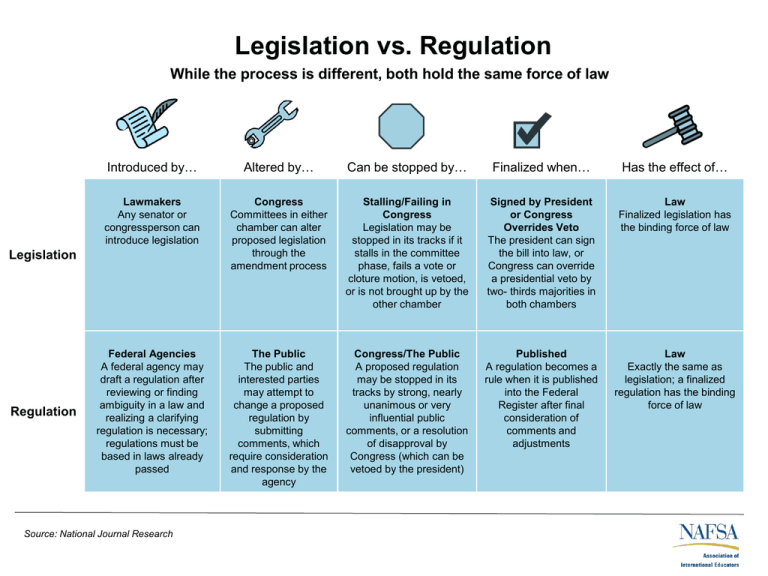Regulation Vs Standard : What it is
Regulation Vs Standard: What it is
When it comes to the realm of laws and guidelines that govern various industries, the terms "regulation" and "standard" are often used interchangeably. However, it is important to understand that there are distinct differences between the two. In this article, we will delve into the differences between regulation and standard, their importance, and how they impact different sectors. So, let's dive right in!
1. Understanding Regulation and Its Significance

Regulation refers to a set of rules or laws established by a governing body, typically a government agency or regulatory authority. These regulations outline mandatory requirements that businesses and individuals must adhere to in order to ensure safety, fairness, and compliance within a particular industry or sector.
Regulations play a critical role in maintaining order, protecting consumers, and promoting public interest. They establish minimum standards and guidelines that businesses must meet to operate ethically and responsibly. Without regulations, industries would be prone to exploitation, fraudulent practices, and potential harm to the environment or public health.
2. Dissecting Standards and Their Importance

Standards, on the other hand, are voluntary guidelines or specifications set by industry organizations, professional associations, or standardization bodies. These standards define the best practices, procedures, and technical requirements that businesses can choose to adopt to improve their operations, products, or services.
While standards are not obligatory, they provide a benchmark for excellence, quality assurance, and compatibility. Adhering to industry standards can give businesses a competitive edge, enhance customer trust, and foster innovation. Standards also facilitate interoperability between different systems, enabling seamless communication and collaboration between organizations.
3. Key Differences Between Regulation and Standard
Although regulation and standards both aim to establish guidelines, they differ in several key aspects:
- Mandatory vs Voluntary: Regulations are legally binding and must be followed, whereas standards are voluntary and businesses can choose to adopt them.
- Enforcement: Regulations are enforced by government agencies or regulatory bodies with legal consequences for non-compliance. In contrast, standards rely on self-regulation, peer review, or certification bodies to ensure adherence.
- Scope and Applicability: Regulations typically apply universally within a jurisdiction, while standards often cater to specific industries or niche markets.
- Minimum Requirements vs Best Practices: Regulations establish minimum requirements to meet legal obligations, whereas standards outline best practices for achieving excellence.
FAQ Section
Q: Are regulations applicable to all industries?
A: Yes, regulations are generally applicable to all industries, as they are designed to ensure compliance and protect public interest. However, some regulations may be specific to certain sectors due to unique safety or environmental concerns.
Q: Can businesses voluntarily adopt regulations?
A: While businesses can choose to go beyond the minimum requirements outlined in regulations, adherence to regulations is mandatory for compliance purposes.
Q: Who creates industry standards?
A: Industry standards are often developed by professional associations, standardization bodies, or organizations tasked with promoting best practices and ensuring uniformity within specific industries.
Conclusion
In summary, regulations and standards are integral components of any industry or sector. While regulations are legally binding and enforceable, standards provide voluntary guidelines for excellence and compatibility. Understanding the differences between regulation and standard is crucial for businesses to operate ethically, meet legal requirements, and strive for continuous improvement. By complying with regulations and adopting relevant industry standards, organizations can protect consumers, enhance their reputation, and contribute to the overall growth and development of their respective fields.
Remember, the world of regulations and standards is constantly evolving, so it is essential to stay updated and adapt accordingly to stay competitive and ensure long-term success in any industry.
Regulation Vs. Directive – Medical Standard Time
 Image Source : standard-medical-time.de
Image Source : standard-medical-time.de regulation directive rechtslage regulatory
Legislation Vs. Regulation
 Image Source : studylib.net
Image Source : studylib.net legislation
PANEL: Regulation Vs. Governance: Who Is Marginalised, Is “privacy” The
 Image Source : privacycamp.eu
Image Source : privacycamp.eu The Future Of Wi-Fi: Regulation Vs. Cooperation
 Image Source : enterpriseiotinsights.com
Image Source : enterpriseiotinsights.com Self-Regulation Vs. Co-Regulation—How Are They Different? - Sunshine
 Image Source : www.sunshinechildcounseling.com
Image Source : www.sunshinechildcounseling.com Fiduciary Standard Vs Regulation BI - Fairway Wealth Management, LLC
 Image Source : fairwaywealth.com
Image Source : fairwaywealth.com fiduciary regulation
Regulation Vs Guidelines: What's The Difference? » Differencess
 Image Source : differencess.com
Image Source : differencess.com Self-Regulation Vs. Self-Control - Self-Reg
 Image Source : self-reg.ca
Image Source : self-reg.ca Fiduciary standard vs regulation bi. Regulation directive rechtslage regulatory. Regulation vs. directive – medical standard time. Regulation vs guidelines: what's the difference? » differencess. Self-regulation vs. self-control